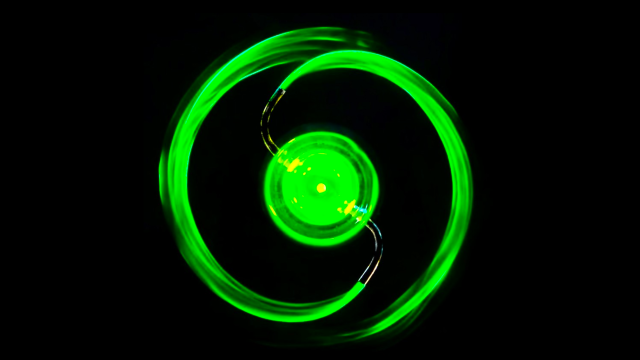For 141 years, physicists like Richard Feynman have puzzled over a question of fluid flow: how would a sprinkler rotate if it were underwater, sucking in the stuff instead of spewing it? Now, a team of researchers has found an answer.
Though the idea was first proposed by experimentalists in the 1880s, it was repopularised by Feynman in the mid-20th century, to the extent that it became known as Feynman’s sprinkler. The issue was thus: A normal sprinkler with S-shaped arms will spit out water, propelling the arms to rotate, watering whatever needs watering. But whether a reverse sprinkler would rotate at all remained an open question, and not for lack of trying.
Feynman tooled around with the idea for a while and even built an experimental set-up to address the question while a graduate student at Princeton. (The experiment ended when a large water-filled bottle exploded.)
Now, a team of researchers at New York University have run it back. The reverse sprinkler redux (as I call it—rolls right off the tongue!) consisted of a submerged sprinkler on an “ultra-low-friction” bearing, according to an NYU release, to optimise the device’s ability to freely spin, and designed in a way to allow them to easily observe water flow through the device.
To that end, the team also dyed the water, added microparticles to it, lit it up with bright green lasers, and videotaped the entire experiment with high-resolution, high-speed cameras. The resulting footage is pretty trippy:
The team’s research—published last week in Physical Review Letters—found that a reverse sprinkler does precisely that. It rotates in the opposite direction to a sprinkler ejecting water.
“The regular or ‘forward’ sprinkler is similar to a rocket, since it propels itself by shooting out jets,” said Leif Ristroph, a researcher at NYU and the study’s lead author, in the university release. “But the reverse sprinkler is mysterious since the water being sucked in doesn’t look at all like jets. We discovered that the secret is hidden inside the sprinkler, where there are indeed jets that explain the observed motions.”
Though the reverse sprinkler rotates (checks notes) in reverse, it only does so at about 1/50th the speed of an ordinary sprinkler. Inside the reverse sprinkler, the sucked-in jets of water collide with one another, though not head-on, and the mingling of that internal water causes the sprinkler’s slow rotation.
Brennan Sprinkle, an appropriately named researcher at the Colorado School of Mines and co-author of the study, added that the methods used in the experiment “will be useful for many practical applications involving devices that respond to flowing air or water.”
Whatever the potential applications, a quandary first posed in the 1880s finally has been answered, with precision testing and modelling that simply wasn’t possible 140 years ago. I hope this gives you something to sprinkle into your next conversation about fluid dynamics.
